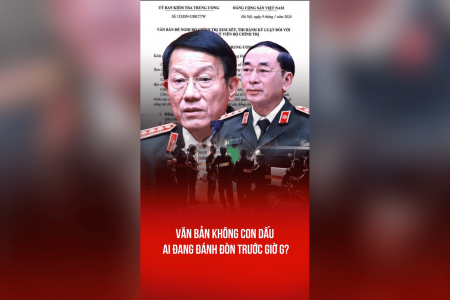
China threatens Taiwan
Military tensions between Beijing and Taipei have reached a peak. Taiwan’s Defense Minister Chiu Kuo-cheng accused China of preparing for a war and is likely to launch a full-scale invasion by 2025.
The situation around Taiwan has been heating up since early October, when nearly 150 Chinese military aircraft, including nuclear-capable H-6 strategic bombers, repeatedly roamed the airspace off this island. Although the Chinese aircraft did not enter Taiwan’s airspace, the Taipei government has expressed concern. Khau Quoc Chinh warned that the situation was „the most alarming in more than 40 years“ and warned that „we will do all we can to protect the island against the threat, despite our joint efforts to live peacefully with the People’s Republic of China.“
Under longstanding policy, the United States provides political and military support to Taiwan but has not made a clear commitment to defend Taiwan from Chinese attacks.
On October 5, US President Joe Biden confirmed that in September’s conversation with Chinese President Xi Jinping, the two sides reaffirmed their respect for the „Taiwan agreement.“ President Biden’s brief comment on the „Taiwan deal“ implied a reference to the US administration’s „one China“ stance. Accordingly, Washington officially recognized China at the same time it severed „diplomatic relations“ with Taiwan in 1979. The US then expected that Taiwan’s future would be determined by peaceful means and the US has no position on Taiwan’s sovereignty. However, in the same year, the US enacted the Taiwan Relations Act, which guarantees to provide Taiwan with the means to defend itself.
After the US president’s remarks, Taiwan’s foreign ministry said it had asked the US side to clarify President Biden’s comments and was reassured that US policy towards Taiwan would not change, and committed to Washington’s defense of Taipei is „firm.“ In the face of military, diplomatic and economic threats from the Chinese regime, Taiwan and the United States have always maintained close and transparent channels of communication, Taiwan’s foreign ministry said.
What does Beijing want when it threatens Taiwan?
The timing that China chooses to threaten Taiwan is quite important. First, China celebrates the National Day of the People’s Republic of China on October 1. China wants to show its national spiritual strength in some form. Another important event was the joint exercise off Okinawa between the US, Japan, Australia, the UK, Canada and the Netherlands. The exercise brings together two US aircraft carriers, one British aircraft carrier, and one Japanese helicopter carrier. As such, this is also a show of American force but on the other side of the Okinawa island chain. In addition, October 10 is a major holiday of the Republic of China, the „National Day“ of Taiwan. One can guess that “there will be a new show of power from China.” However, according to many researchers, the ability to lead to an all-out war between Taiwan and China in the short term is still very limited despite Beijing’s relentless increase in provocations. Beijing’s actions are still very deliberate and moderate because so far, China has not entered Taiwan’s airspace but only in its ADIZ. It is an area of space unilaterally claimed by Taipei and is not a legally enforceable distance.
Political researcher Scott W Harold, of the Rand Corporation, said that at this point, a real invasion would be a „huge challenge“ for the People’s Liberation Army (PLA). and that recent military activities are probably only aimed at threatening this democratic island. „What China does is put pressure on Taiwan – try to set some red lines – and try to escalate the campaign of psychological warfare against the democratic island and its leader Tsai Ing-wen,“ he said.
Euan Graham, a defense analyst at the Singapore International Institute for Strategic Studies, said that more important and remarkable than the number of aircraft deployed was the sophistication and modernity of these vehicles, including fighter aircraft, bombers and airborne early warning aircraft. “It looked like an offensive operation, and part of the steps to increase pressure,” he said. This is not some fighter jet that closes in (airspace) and then turns back when just hitting the boundary, this is a much more purposeful operation.” Control of Taiwan and its airspace is key to China’s military strategy, given the fact that the areas that have seen the most recent sorties all lead to the Western Pacific and the South China Sea.
According to Bonnie Glaser, an expert from China, Taiwan is the only issue that can really lead to a war between the US and China. Remember that China and the US both have nuclear weapons, so if the situation around the Taiwan Strait escalates, it will be really dire. Of course, China thinks that Taiwan is essentially a province of its own. And so, Xi Jinping (as many fear) could give up on peaceful reunification and could use force to invade Taiwan. From that point of view, the recent invasion of Taiwan’s ADIZ by Chinese warplanes is really meant to warn Taiwan not to go too far in its quest for independence. In addition, that move is also intended to cause despair in the Taiwanese people, from which they may give up their aspirations for independence and accept becoming a part of China.
How is Taiwan related to Vietnam and the South China Sea?
On October 5, speaking to reporters in Taipei, Taiwan Prime Minister To Trinhchang warned: „Taiwan must be vigilant. China is increasingly taking the lead. The world has also witnessed China repeat a lot of actions that harm regional peace and put pressure on Taiwan.“ He added that Taiwan needs to „strengthen itself and unite. Only then, countries that want to annex Taiwan will not dare to easily use force. Only when we help ourselves can others help us.”
The story of Taiwan is also the story of Vietnam. China not only targets Taiwan but also has the intention to occupy the entire South China Sea. China has built outposts here to turn into military bases. Therefore, China has deployed very large coast guard ships and threatened other countries, including Vietnam. China wants to ban these countries from exploiting resources in waters that are in fact under their sovereignty under the 1982 United Nations Convention on the Law of the Sea (UNCLOS), including fishing and energy extraction. And China has also used these military bases to signal that Beijing may have a number of claims that extend beyond claims of legal maritime rights. As a result, the US and other Western countries are concerned that China will impede freedom of navigation in the region. The navies – not only of the US, but also of Japan, Australia, France and others – have conducted exercises in the South China Sea just to demonstrate that the waters must be kept free. for all other countries.
The way Taiwan counters the threat from Beijing will be a valuable lesson for Vietnam. And if Beijing succeeds in invading Taiwan, China will soon continue to invade the bases that Vietnam holds in the Truong Sa (Spratlys).
Thoibao.de (Translated)
Source: https://www.rfa.org/vietnamese/news/blog/tension-in-taiwan-lesson-for-vn-10122021145743.html


























